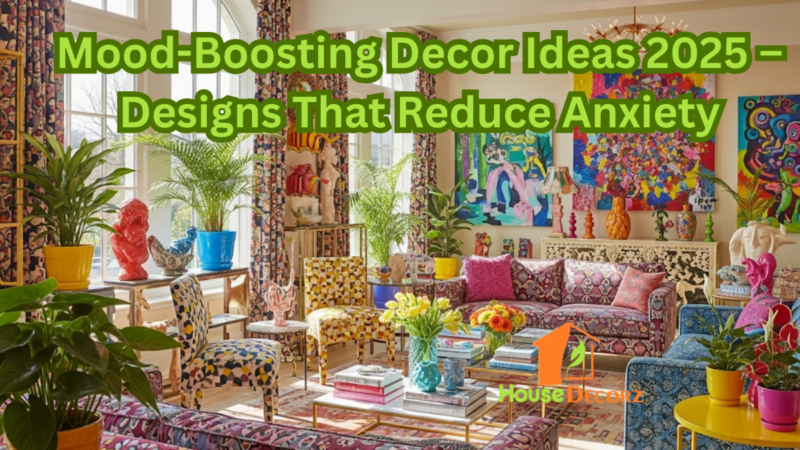Japandi Kitchen Trend 2025 – How to Bring Calm and Clean Style to Your Cooking Space

Japandi kitchens 2025 are redefining modern cooking spaces by merging the simplicity of Scandinavian design with the warmth and elegance of Japanese aesthetics.
This fusion creates a serene, clutter-free environment that promotes functionality and mindfulness.
As homeowners seek tranquility in their interiors, Japandi kitchens have emerged as a leading trend, offering a harmonious balance between minimalism and natural elements.
Key Elements of Japandi Kitchens 2025
Japandi kitchens are characterized by a few essential design principles that make them stand out:
1. Natural Materials for a Warm and Organic Feel
Japandi kitchens embrace natural materials such as wood, stone, and bamboo to create a grounded and inviting atmosphere. Light-toned wood cabinetry, stone countertops, and rattan accents contribute to the organic aesthetic while maintaining durability and sustainability.
2. Minimalist Kitchen Design with Functional Simplicity
A core principle of Japandi kitchens is the “less is more” philosophy. Clean lines, uncluttered surfaces, and hidden storage solutions ensure a streamlined and efficient cooking space. Open shelving is often used to display carefully curated kitchen essentials, reinforcing the minimalist kitchen design.
3. Soft, Neutral Color Palettes
Japandi kitchens favor soft, neutral tones such as beige, taupe, muted greens, and warm grays. These colors create a calming ambiance while allowing natural light to enhance the space. The subtle contrast between light wood and darker stone elements adds depth without overwhelming the simplicity of the design.
Lighting plays a crucial role in Japandi kitchens. Soft, diffused lighting enhances the cozy and tranquil atmosphere. Pendant lights with natural textures, such as woven rattan or frosted glass, complement the aesthetic while providing functional illumination.
5. Sustainable and Eco-Friendly Design
Sustainability is a key focus in Japandi kitchens 2025. Homeowners are opting for eco-friendly materials, energy-efficient appliances, and water-saving fixtures to align with environmental consciousness. The integration of greenery, such as potted plants or herb gardens, further reinforces the connection to nature.
How to Incorporate Japandi Style into Your Kitchen
If you’re looking to transform your kitchen into a Japandi-inspired space, here are some practical steps:
1. Choose Natural and Sustainable Materials
Opt for wooden cabinetry, stone countertops, and bamboo accessories to create an organic and timeless look. Prioritize sustainable materials that enhance durability and eco-friendliness.
2. Declutter and Simplify Your Space
Japandi kitchens thrive on simplicity. Remove unnecessary items, invest in smart storage solutions, and keep countertops free from excessive decor. Focus on functionality while maintaining a visually appealing arrangement.
3. Embrace Soft, Earthy Tones
Select a neutral color palette that promotes relaxation and harmony. Pair light wood with soft grays, muted greens, or warm beige tones to achieve a balanced and inviting atmosphere.
4. Integrate Thoughtful Lighting
Use pendant lights, under-cabinet lighting, and natural light sources to create a warm and welcoming environment. Soft lighting enhances the minimalist kitchen design while maintaining practicality.
5. Add Subtle Decorative Elements
While Japandi kitchens prioritize minimalism, subtle decorative touches can enhance the space. Consider ceramic dishware, linen textiles, and handcrafted wooden utensils to add personality without disrupting the clean aesthetic.
Recommendation
Japandi Style Is the 2025 Interior Design Trend You Need to Try
Top Kitchen Color Palettes for U.S. Homes in 2025 – Designer Picks
How to Style an Open Kitchen and Living Room Layout
5 Affordable Small Kitchen Remodel Ideas That Look Expensive
2025 Kitchen Design Trends You Need to Know
FAQs About Japandi Kitchens 2025
Q1: What makes Japandi kitchens different from other minimalist designs?
A1: Japandi kitchens combine the simplicity of Scandinavian design with the warmth and elegance of Japanese aesthetics. Unlike traditional minimalist kitchens, Japandi spaces incorporate natural materials, soft lighting, and organic textures to create a more inviting and serene atmosphere.
Q2: Can Japandi kitchens work in small spaces?
A2: Yes, Japandi kitchens are ideal for small spaces due to their emphasis on functionality and clutter-free design. Smart storage solutions, open shelving, and neutral color palettes help maximize space while maintaining a clean and airy feel.
Q3: What are the best materials for a Japandi kitchen?
A3: Natural materials such as light-toned wood, stone, bamboo, and rattan are commonly used in Japandi kitchens. These materials enhance durability, sustainability, and aesthetic appeal.
Q4: How can I make my kitchen more eco-friendly with Japandi design?
A4: To make your kitchen more eco-friendly, opt for sustainable materials, energy-efficient appliances, and water-saving fixtures. Incorporating indoor plants and natural lighting also contributes to a greener and healthier space.
Q5: Is Japandi kitchen design expensive to implement?
A5: Japandi kitchens can be adapted to various budgets. While high-quality natural materials may require a larger investment, there are affordable alternatives that still achieve the desired aesthetic. Prioritizing simplicity and functionality can help create a Japandi-inspired kitchen without excessive costs.
Conclusion
Japandi kitchens 2025 offer a perfect blend of Japanese Scandinavian style and minimalist kitchen design, creating a serene and functional cooking space.
By embracing natural materials, soft color palettes, and sustainable practices, homeowners can transform their kitchens into calming retreats that promote mindfulness and efficiency.
Whether you’re renovating or making small adjustments, Japandi design principles can bring balance and beauty to your kitchen.






